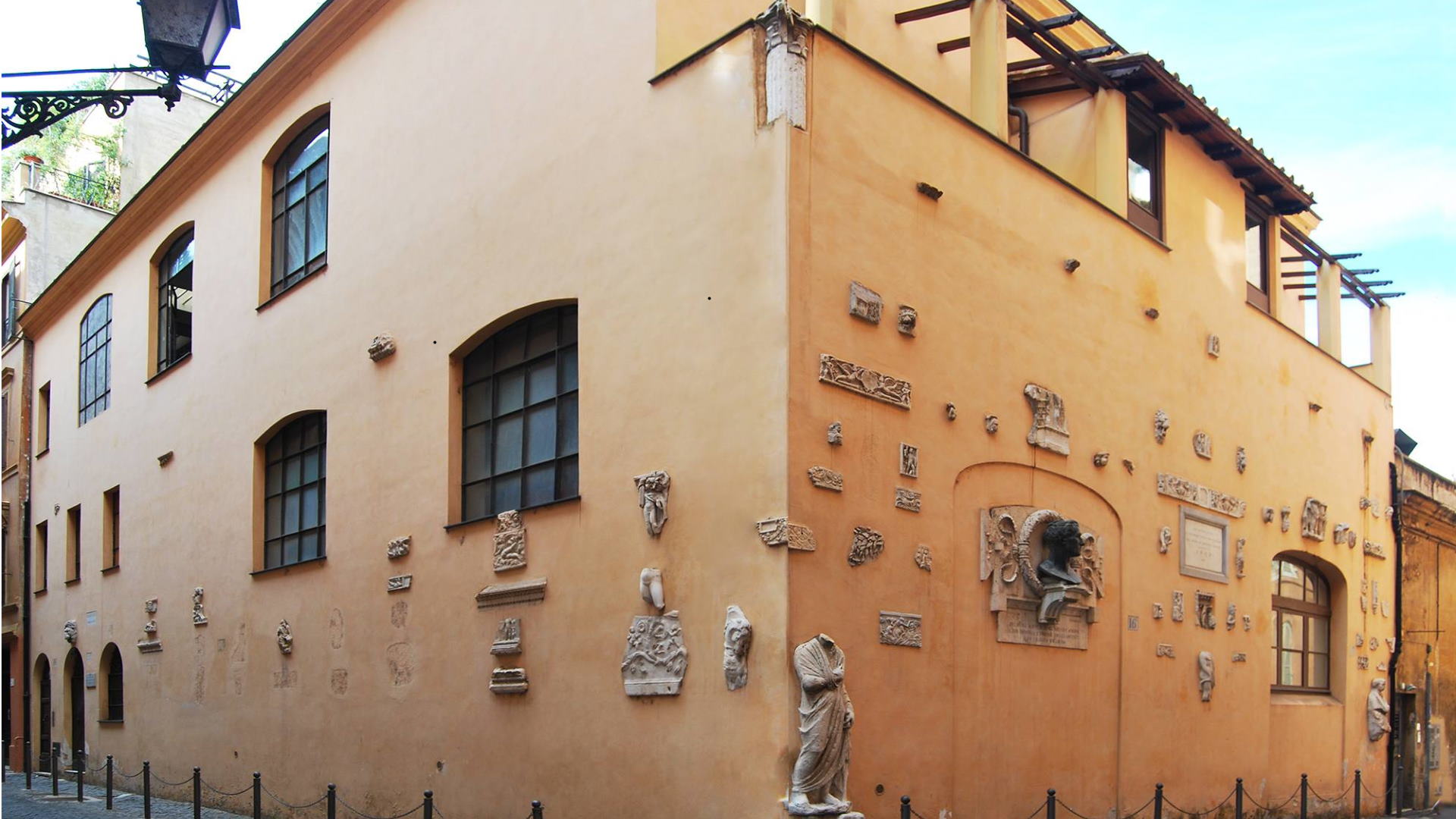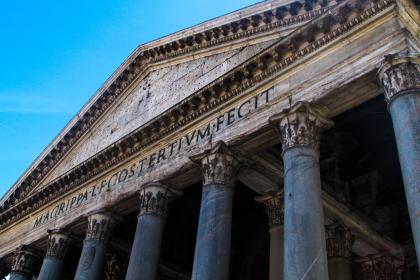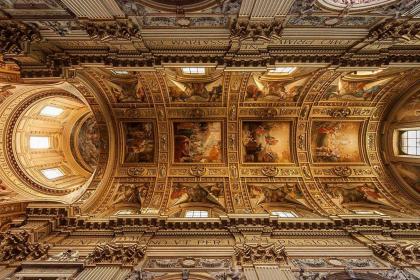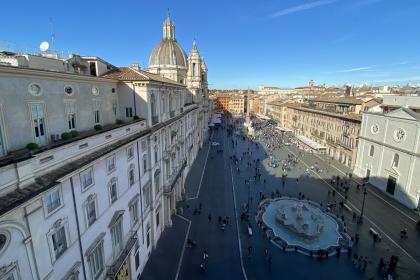
In 1779 the sculptor Antonio Canova moved to Rome where he bought this building near the Port of Ripetta, in the Campo Marzio district, to build his own studio. It was a real old-fashioned workshop, where Canova worked together with his collaborators.
The simple building, with arched doors and windows,outside is decorated many fragments of statues, sculptures, architraves and other archaeological finds also housed inside. The main entrance is flanked by two plaques.
Some of his most famous works were sculpted in this studio, such as Love and Psyche, The Three Graces, Paolina Borghese and the Penitent Magdalene, received with great enthusiasm by the public at the Paris Salon in 1808.
On the artist's death in 1822, the Palace was bequeathed - along with all the equipment - to Antonio D'Este, sculptor and collaborator of Canova himself, and to his son Alessandro. After several changes of ownership, in 1880 it was bought by the Roman painter Archimede Tranzi.
Currently the building is owned by the Vitale-Giuliani families and, in 1953, it was bound by the Italian State for its historical and artistic interest.
Photo credits: Courtesy of Canova Palace official site
The Pantheon

 Condividi
Condividi
Basilica of Sant'Andrea della Valle

 Condividi
Condividi
Navona Square

 Condividi
Condividi
The most iconic square of Baroque Rome
Information
 Condividi
Condividi
Location
To find out about all accessibility services, visit the Rome accessible section.











































